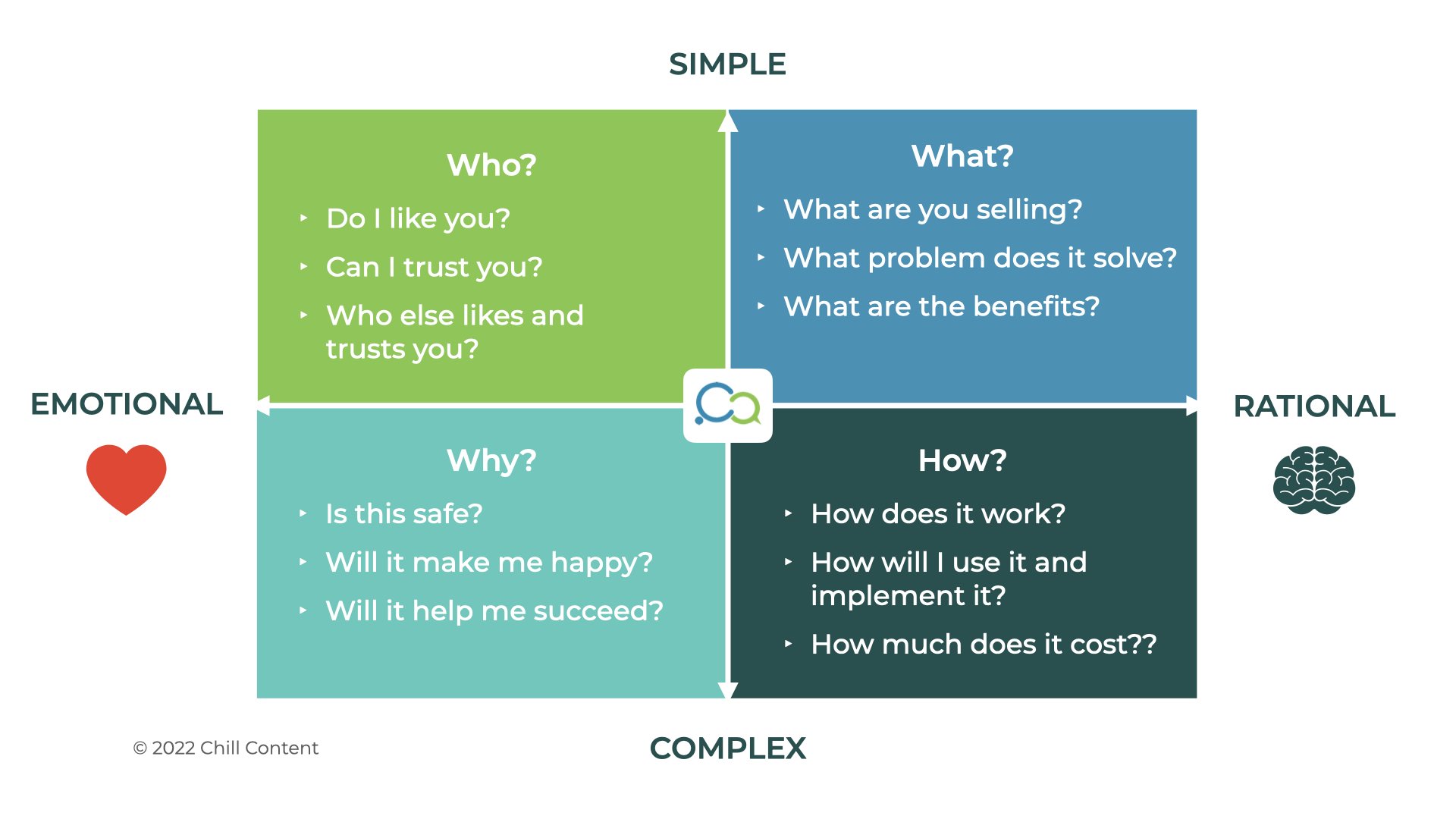How to choose the best content for your B2B customer’s journey
Creating the right content for different stages of the customer journey is perpetually cited by B2B content marketers as one of their top challenges. But why? It’s not like we don’t have a bunch of frameworks and models for this. They may come in different shapes and sizes, but most are based on some version of a funnel.
Here’s a (stereo)typical formula:
Top of the funnel (TOFU): Despite the high-protein acronym, TOFU often means listicles, infographics and short videos, packed with empty calories and described as “snackable” (probably by your boss).
Middle of the funnel (MOFU): Includes gated lead gen assets as well as product demos, case studies and comparison guides that support active evaluation of solutions to an identified need.
Bottom of the funnel (BOFU): Supports business case and vendor selection. Includes customer stories and testimonials, TCO/ROI calculators, and product selection tools.
Unfortunately, this one-size-fits-all approach tends to focus too much on format and not enough on function. We end up creating content for the funnel — rather than our customers.
Why the ‘funnel formula’ falls short
We usually think of B2B purchase decisions as a complex endeavor with large buying committees, long sales cycles, and multiple, clearly defined steps that occur in a particular order. And that’s usually true.
But not every journey needs to start with an infographic and end with an ROI calculator.
Your audience has different interests, needs and questions at different stages of their decision-making process, which will vary depending on what they’re deciding to buy or do and on the nature of their existing relationship with you.
So, give every piece of content a job description. Think about the purpose of the content, the customer needs it serves, and the type of information you need to communicate. Only then can you determine what type of content will best serve your purpose.
Simple or complex?
If you need to communicate a complex concept simply, then an infographic is ideal. (Explore the superpowers of infographics in this brilliant article by Rich O’Donnell.)
If you’re comparing the features of two different products, then a simple text-based table would work.
Sometimes, you need a more dynamic type of content that reveals information more sequentially, like this Heritage of Innovation timeline from GE Aviation.
Emotional or rational?
You’ve probably heard of, if not read, the book Thinking Fast and Slow, by Daniel Kahneman. Based on behavioral economics research, the book explores the psychology that drives the way people think and make decisions.
At the risk of oversimplifying the complex concepts covered in 512 pages, fast thinking is what’s known as System 1 thinking — processed by the “lizard brain” that responds instinctively, on an emotional level. Slow thinking, or System 2 thinking, is more logical and methodical.
Your content strategy needs to account for both as your customer moves through their decision journey. That means understanding when you need to appeal to your audience’s fast, intuitive thinking and when you need to help them through slower, more rational aspects of their decision-making.
Paradigm shift or status quo?
Another consideration is the maturity of your market and the nature of what you’re selling. About a decade ago, SiriusDecisions (now part of Forrester), introduced its Demand Type Framework, which defined a more nuanced perspective on the customer journey based on the innovation lifecycle.
New concept: Disrupts the status quo by defining a new problem; perceived as higher risk.
New paradigm: Innovates on the status quo by solving a known problem in a new or different way.
Established: Becomes the status quo. It’s accepted and budgeted for as a business-as-usual necessity — and highly competitive.
When risk and barriers are high, it’s more difficult to persuade B2B buyers to buy. As markets mature, the risk goes down, lowering some barriers — but making it difficult to differentiate yourself from competitors.
Create content for your customer, not the funnel
With all that in mind, what is the change you need your buyers to believe in? What are the stakes? Are you asking them to renew their contract — or to make a career-making (or breaking) leap of faith?
The higher the risk, the more important it is to help them envision the rewards while giving them the content they need to rationalize the risks and build a sound business case.
So, instead of defining your content mix based on TOFU, MOFU and BOFU, think about your content types in the context of your customer’s information needs and the response you want to evoke. Are the ideas you need to communicate simple or complex? Emotional or rational? Are you disrupting the status quo, changing an existing paradigm, or competing for market share?
Need help choosing the right content types for your customer’s journey? Let’s talk.



